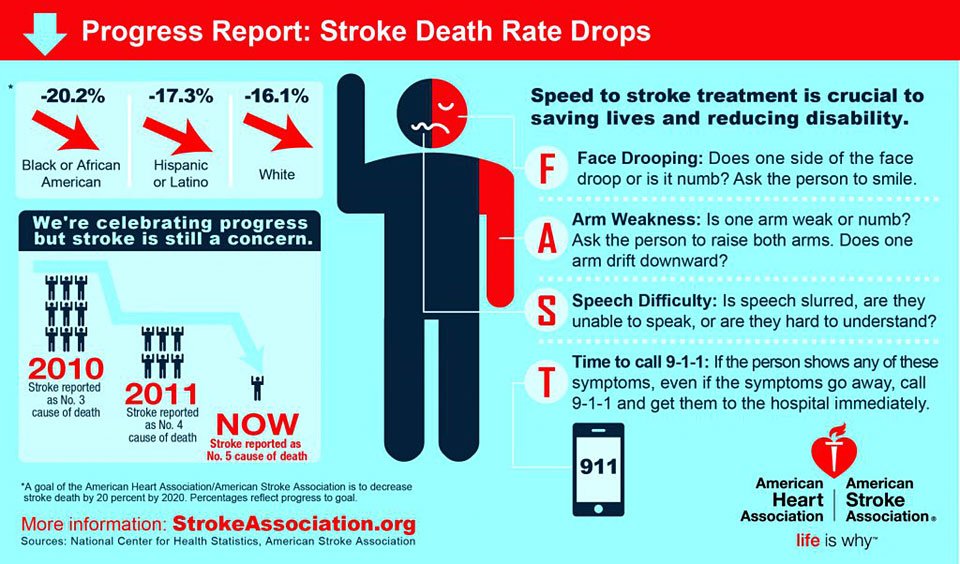‘BE FAST’ and save someone from the effects of a stroke

While World Stroke Day is in October, it is crucial to know the warning signs and symptoms of a stroke every day of the year.
The B.E. F.A.S.T. guideline helps you remember that timely treatment is the key to saving someone’s life or quality of life.
B – Balance: Is the person experiencing a sudden loss of balance or coordination?
E – Eyes: Is the person having a sudden change in vision or trouble seeing
F – Face: Ask the person to smile. Does one side of the face droop?
A – Arms: Ask the person to raise both arms. Does one arm drift downward?
S – Speech: Ask the person to repeat a simple phrase. Is their speech slurred or strange?
T – Time: If you observe any of these signs, call 9-1-1 immediately.
If you think someone has suffered a stroke, call 9-1-1 immediately. Paramedics can begin life-saving treatment on the way to the emergency room.

Image courtesy of AHA/SA
“Some treatments are limited to the first three hours after a stroke occurs,” said Jean Estes, stroke nurse coordinator at Falmouth Hospital. “The sooner someone takes action, the more we can do to save the person’s brain.”
Strokes cause about one out of every 19 deaths in the U.S. each year, making it the third leading cause of death for women and the fourth leading cause of death for men. Strokes are also a leading cause of serious long-term disability in America.
Immediate treatment can prevent death and minimize the long-term effects of a stroke, according to the American Stroke Association (ASA) website. The Association reports that thanks to recent medical advances, stroke treatments and survival rates have improved greatly over the last decade.
A stroke occurs when a vessel in the brain is blocked by a blood clot or ruptures, according to the ASA. About 85 percent of all strokes in the U.S. are ischemic, which is a stroke caused by a clot.
The gold-standard treatment for stroke is tissue plasminogen activator or tPA, the ASA says. The drug dissolves clots and improves blood flow to the brain.
If administered within three hours (and up to four-and-a-half hours in certain eligible patients), tPA may improve the chances of recovering from a stroke,” according to the ASA.
The Centers for Disease Control and Prevention (CDC) says high blood pressure, heart disease, diabetes, cigarette smoking, atrial fibrillation are risk factors for stroke. The good news, according to the CDC, is that you can help cut your risk for stroke by:
- Eating a healthy diet rich in fresh fruits and vegetables and low in sodium and trans fat.
- Maintaining a healthy weight.
- Staying physically active each day.
- Quitting smoking.
- Consuming alcohol in moderation.
- Preventing or treating high cholesterol, high blood pressure, or diabetes.
Cape Cod Hospital and Falmouth Hospital have received national honors for their efforts in stroke care. Both hospitals have received multiple Gold Performance Achievement Awards from the ASA for their strict adherence to practices that best treat and prevent this devastating condition.
The evidence-based awards recognize hospitals for their compliance with the ASA’s Get With The Guidelines®-Stroke Quality Measures, including aggressive and appropriate use of medications like the clot-busting drug tPA, antithrombotics and anticoalgulation therapy, as well as deep vein thrombosis (DVT) prophylaxis, cholesterol-reducing drugs and educational efforts.
“The awards are a credit to the entire stroke teams at the hospitals – the emergency departments, cardiologists, neurologists, hospitalists, imaging, physical therapy and nurses on the medical floors,” said Estes.
